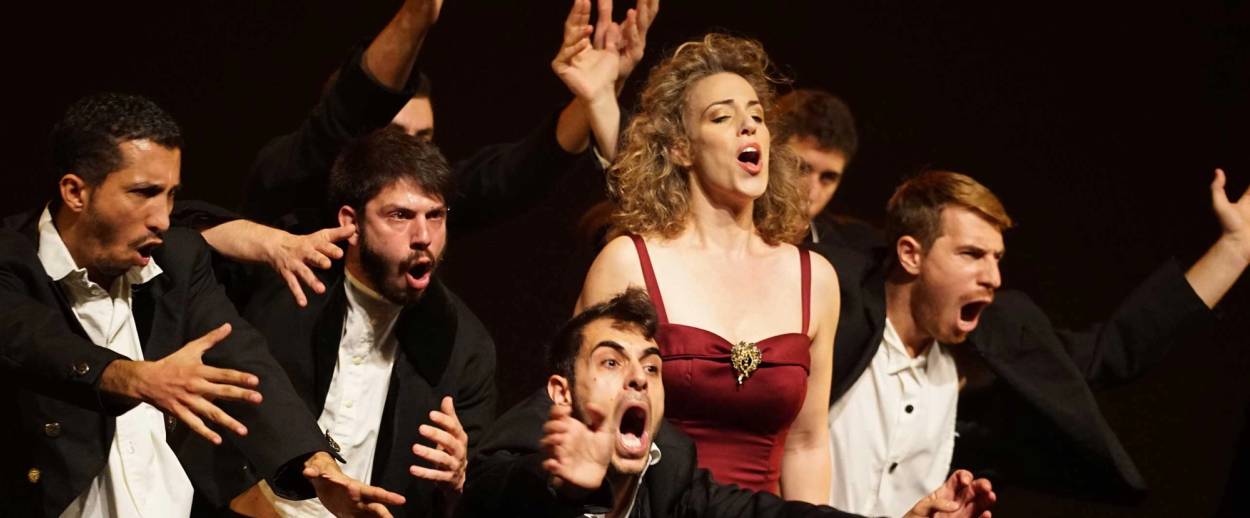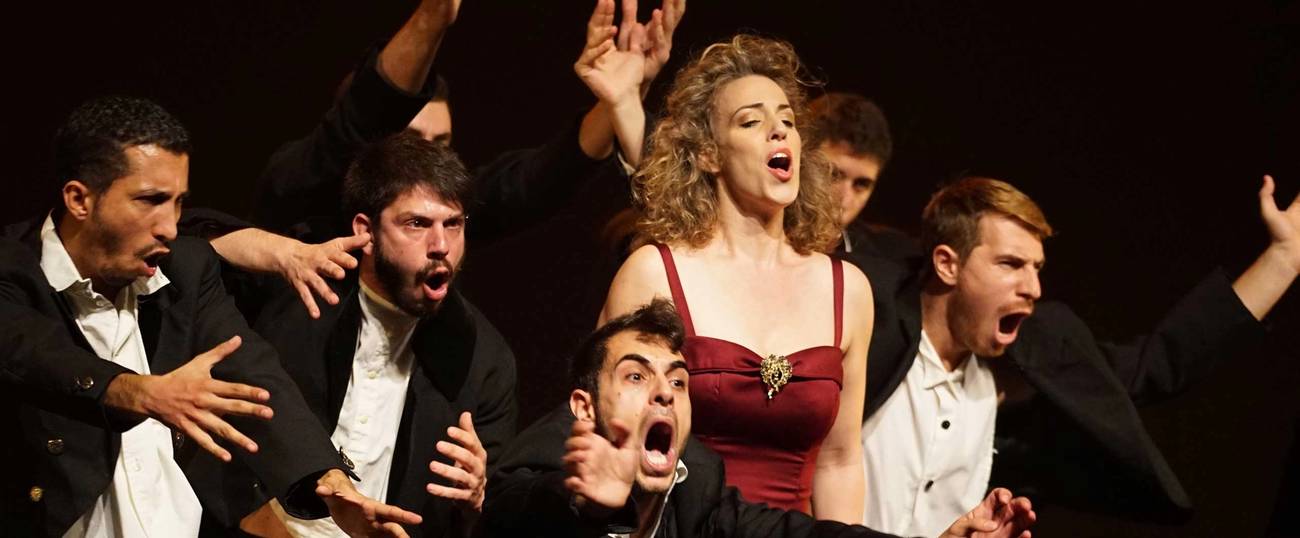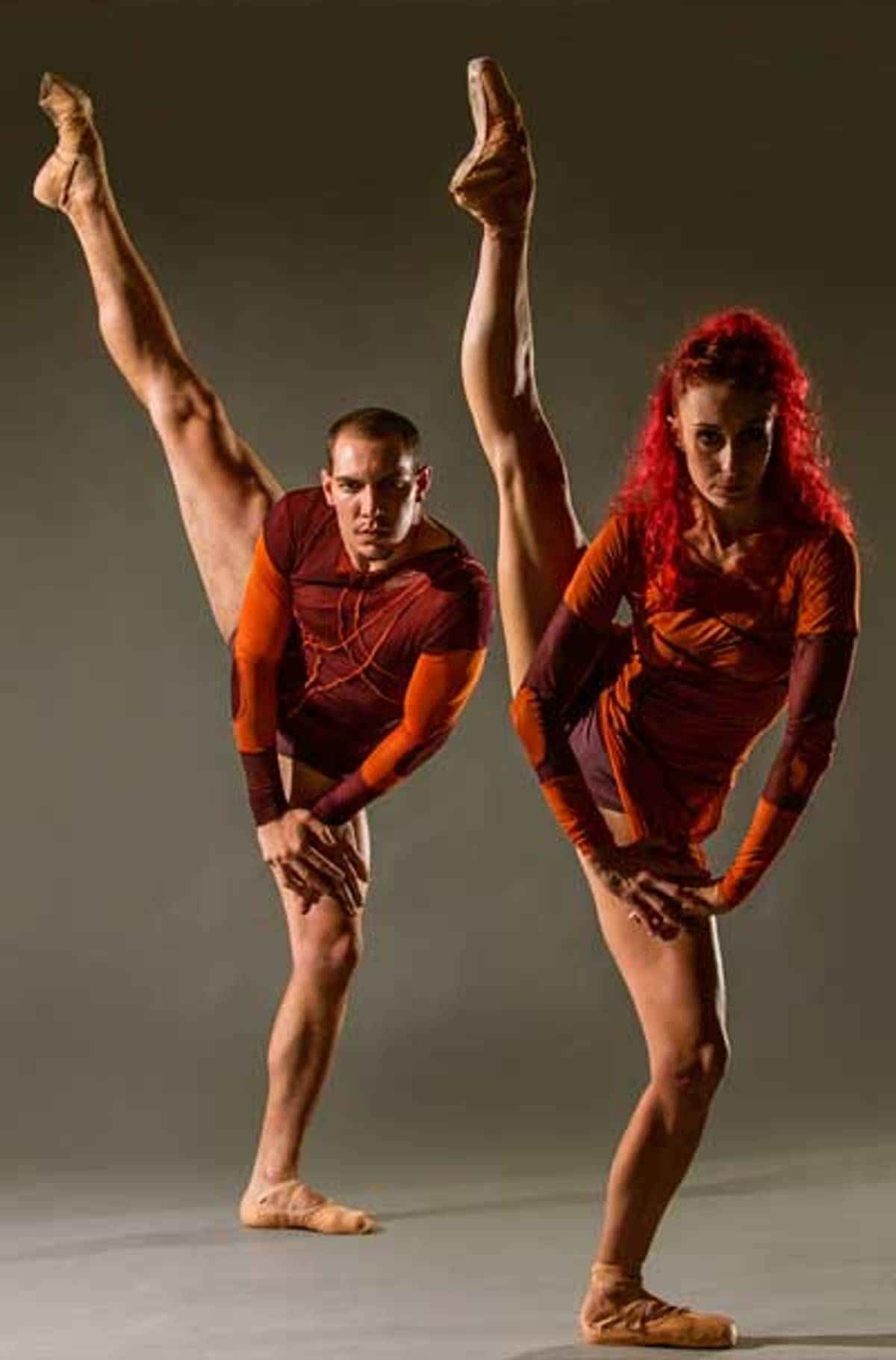The Architect and the Hit Man Meet in Itzik Galili
The Israeli choreographer’s signature neoclassical style on view in two new pieces, ‘Mono Lisa’ and ‘Man of the Hour’




Itzik Galili laughed when asked to describe his movement style. “Everyone tries to put you in certain boxes. I simply don’t fit into a category,” he said in a phone interview. “Each piece I create comes from a different inspiration and evolves from the bodies of the dancers I’m working with.”
Photos of Galili from current rehearsals feature him clad in black turtlenecks, black framed spectacles, and sporting a totally shaved head. His striking appearance suggests the hybrid of an architect and a hit man, but his demeanor is joking, quirky, and jovial. Born in Tel Aviv in 1961, the choreographer trained and performed with both the Bat-Dor and Batsheva dance companies, Israel’s premier troupes. This season two of the veteran Israeli choreographer’s pieces are being performed—Mono Lisa with Ballet Jazz de Montreal (BJM), which opens at New York’s Joyce Theater on May 24, and Man of the Hour with The Israeli Opera, which opened last January in Tel Aviv. “The piece is about Israel for me. It is hectic, intellectual, sober, and primitive,” said Galili. “The man of the hour is the person sitting in the audience, the man who is overworked and overloaded with creative energy.”
Unlike many Israeli choreographers whose movement draws greatly from folk dance, Galili’s aesthetic remains more formal. His classical training—the clean lines of arabesques and pointed toes—always comes through. “He has a signature neoclassical style,” said Céline Cassone, the principal dancer in Mono Lisa. “But at the same time he is very versatile. He can be very grounded and also very light. He can do anything.”

Mono Lisa, a 7- minute duet featuring one male and one female dancer in pointe shoes, is a powerhouse of lifts, kicks, and spins. With dark smoky lighting effects, the couple dances in the setting of a warehouse. The score is a soundscape of repetitive, percussive beats reminiscent of an on old-fashioned typewriter that clicks and loudly slams at the end of each line of text. Furious and frenetic, the dancers’ arms flick and bend like the inner mechanisms of an engine. The partnering sections are particularly breathtaking. The dancers wrap around each other’s torsos in gymnastic lifts. As they hold hands during side leg extensions and arabesques, their limbs are knitting needles, finding intricate pathways around each other’s bodies.
In stark contrast, Man of the Hour is a large group piece and an earthy commentary on Israeli society. Commissioned by The Israeli Opera and Tel Aviv’s Suzanne Dellal Centre, the piece features an all-male dance cast, accompanied by two female opera singers. It is the first choreographic work Galili has created in his own country in 20 years.
Costumed in black suits with white shirts, the cast of eight dancers exude masculinity. They punch, push, squat, and lunge, enacting a type of war dance in various line, circle, and huddle formations. The dancers, all Israeli, are primarily trained in the Gaga technique, the improvisational dance method invented by choreographer Ohad Naharin. Creating choreography for them challenged Galili, who is accustomed to working primarily with ballet companies, but he managed to incorporate his formalist style seamlessly. “We really worked from the dancers’ abilities and let the movement happen. It was a very different product from what I’m used to, but I enjoyed it immensely.”
The male cast of Man of the Hour also vocalizes, acting as an onstage chorus, screaming and shouting in an invented gibberish language. Galili has become increasingly interested in combining voice and text in his choreography and recently he set a 20-minute solo with text titled Little Tiny Bite on American dancer Troy Ogilvie, which will be performed at Springboard Danse in Montreal later this summer.
“This piece was something really new for me. It required so much clarity in both my movements and my emotional range,” Ogilvie in an interview. The vocal work is even more integrated into the choreography in this piece as there are very few moments of silence. Ogilvie learned new techniques to balance her breath and volume while dancing with such physicality. “It really transforms the genre, the text illuminates the movement, and the dance creates a foundation for the text. It is classic Galili—head, hips, and heart—a blend of intellectual, physical, and emotional choreography.”
Living in Europe for so many years, Galili remained mostly under the radar in his own country. His choreography adds new elements of refinement to the canon of Israeli contemporary dance, much of which is focused on raw, coarse intensity. He now splits his time between Holland and Israel and will begin work on two new operas in the coming year.
When asked about his creative process, he is remains slyly evasive. “What project is ever created the same way? Sometimes I get inspiration from music, from dancers in the studio. Sometimes I get inspired just walking around in the park.”
Impressed by the creativity and opportunity in the contemporary dance community, he hopes to continue to create more work in Israel. “As funding is becoming more limited in Europe, Israel is more and more the place to be right now in terms of dance,” said Galili. “The energy here, the dancers, and the motivation to create new work; it is a sight to behold.”
***
You can help support Tablet’s unique brand of Jewish journalism. Click here to donate today.
Stacey Menchel Kussell is a culture writer who frequently covers Israeli contemporary dance.